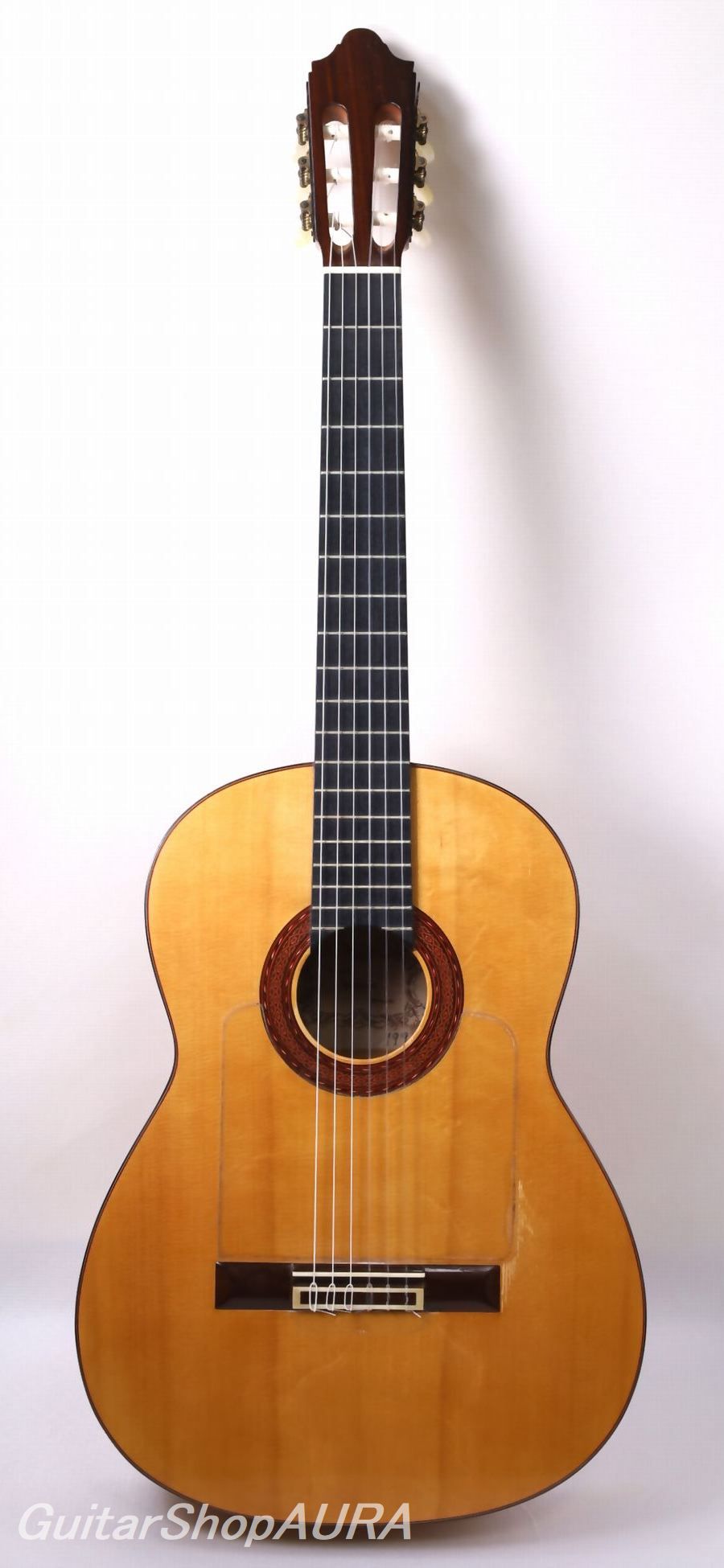
| Instrument | Manuel Bellido |
| Category | Imported Flamenco Guitars 〔Used〕 |
| Number/Model | Flamenco Blanca |
| Scale length | 655mm |
| Country | Spain |
| Year | 1996Year |
| Top | Solid Spruce |
| Side&Back | Solid Cypress |
| Condition※ | 7 |
| List price | INQUIRE |
| Price (tax included) | Please Inquire |
| option | With Hardcase |
Click to enlarge the photos below
Neck: Cedro
Fingerboard: Ebony
Finish(Top): Shellac
Finish(Back & Sides): Shellac
Tuning Machines: Fustero
String Height(1st): 2.0mm
String Height(6th): 2.5mm
【Profile】
Manuel López Bellido was born in Granada in 1939. At the age of 13, he began an apprenticeship at the furniture workshop of Claudio Carmona, where he learned woodworking skills from his friend Antonio Marín Montero, already a talented craftsman at the time. A chance request to repair a bandurria sparked his interest in instrument construction, and at 16, he left the furniture trade to join the workshop of Eduardo Ferrer—one of Granada’s leading luthiers and mentors.
Initially assigned to making castanets, Manuel briefly considered returning to furniture work. However, Ferrer recognized his skill and rehired him as a full-time instrument maker, assigning him to bandurrias and guitars. This marked the true beginning of Bellido's journey as a luthier. Antonio Marín later joined Ferrer’s workshop as well, and the two resumed their collaboration.
In 1960, after completing his military service at the age of 21, Bellido decided to establish himself independently. He and Marín launched the Montero y Bellido brand. Early on, they produced instruments under Ferrer’s or Manuel de la Chica’s labels to sustain their workshop. Though they faced several relocations, their reputation grew steadily—eventually attracting attention from renowned artists such as Regino Sainz de la Maza and Paco de Lucía.
By the 1970s, demand increased, including from international markets like Japan. The workshop expanded to include Manuel’s younger brother José López Bellido (b. 1943), Antonio’s nephew Paco Santiago Marín (b. 1946), and later Rafael Moreno (b. 1954) as apprentices. In 1973, Paco Santiago Marín left to start his own workshop, and in 1974, another of Antonio's nephews, José Marín Plazuelo (b. 1960), joined. Shortly thereafter, Manuel and Antonio parted ways and each began working independently. José Marín would continue under Antonio’s direction.
Bellido's guitars are deeply rooted in the Granada tradition passed down from his teacher Eduardo Ferrer. Yet, he has consistently pursued structural innovation, sometimes even bordering on modern guitar aesthetics—without ever compromising the distinct tonal identity of his instruments. His guitars produce a vibrant, wood-rich resonance characteristic of Granada, combined with a certain stoic refinement. While best known for flamenco models, his instruments often carry a broad musical nuance that appeals to a wide range of players and have earned a devoted following.
Today, Manuel continues to work at his workshop on Paseo de Las Palmas, No. 5, alongside his sons Jesús and Mauricio, who build under their own respective brands.
【Description】
This is a 1996 flamenco blanca guitar by Manuel Bellido. The handwritten label originally read '1995,' with the last digit corrected to '6,' and a bar inside the back is marked “GRANADA 1992.” While the reason for this discrepancy is unclear, it is likely that construction began in 1992 and the guitar was completed in 1996. Structurally and tonally, the guitar is representative of Bellido’s work from the early 1990s, strongly reflecting the Granada tradition.
The internal bracing design is particularly notable. There are two harmonic bars above the soundhole (toward the neck) and two below (toward the bridge), with the lower of the two bridge-side bars angled downward from bass to treble. Each of the four bars differs subtly in shape and height. A large reinforcement plate surrounds the soundhole, and short vertical braces run along the sides, positioned between the harmonic bars and close to the ribs.
Nine fan braces are used under the top, with a single closing bar only beneath the five bass-side braces (including the center brace). Unusually, this closing bar does not align with the central axis of the end block, but is shifted slightly toward the treble side. A thin bridge plate extends the full width of the bridge area. The body resonance is set slightly above G#.
The use of four harmonic bars and nine fan braces immediately brings to mind the internal structure of guitars made by Ignacio Fleta of Barcelona. However, applying such a structure to a flamenco guitar is rare, and likely unique to Bellido within Spain. Rather than adopting Fleta’s design wholesale, Bellido introduces subtle original features—such as the asymmetric closing bar placement—to tailor the structure to a flamenco model.
Despite the structural nod to Fleta, the sound is purely Andalusian in character. It offers an authentic flamenco tone with crisp articulation, expressive attack, and responsive dynamics. Yet, unlike the bold or bright tonal personality sometimes associated with flamenco guitars, Bellido’s sound carries a subtle musical darkness and elegance—qualities that contribute to a refined, introspective character unique to his work.
The guitar shows heavy signs of use, with scratches, pick marks, and dings consistent with extensive playing. There are no repaired cracks, but the golpeador (tap plate) appears to have been replaced at some point. The original shellac finish remains intact and has not been refinished. The neck, frets, and tuning machines are in good playing condition. The neck has a slim, flat D-shaped profile typical of this maker, offering a very compact and comfortable grip.
Current string action measures 1.8 mm (1st string) and 2.8 mm (6th string) at the 12th fret. Some fret buzz may occur depending on playing style, but the guitar is currently set up in this condition. Saddle height remains at 1.5–2.0 mm. The guitar weighs 1.42 kg.